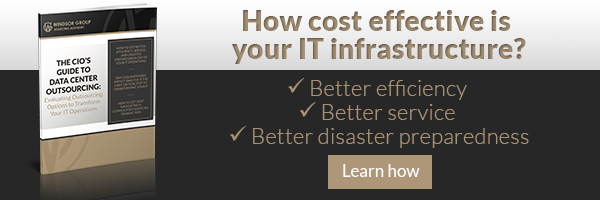 You’re ready to consider outsourcing. That means you’ll need to get serious about comparing costs. You may be very surprised to learn that sifting through today’s range of IT services pricing models can be almost as complex as developing delivery solutions and finding the right provider. The landscape is very different than just a few short years ago.
You’re ready to consider outsourcing. That means you’ll need to get serious about comparing costs. You may be very surprised to learn that sifting through today’s range of IT services pricing models can be almost as complex as developing delivery solutions and finding the right provider. The landscape is very different than just a few short years ago.
No more one-size-fits-all pricing.
Companies have long known that you can save money by outsourcing all or some of their IT functions, thanks to outsourcing’s inherent scalability. Traditionally, there was a single pricing model based on that scalability – you paid for what you got, turning fixed costs into variable costs.
But the IT outsourcing marketplace has evolved fantastically in recent years. Now you still get those valuable variable costs, but you’re faced with a plethora of innovative infrastructure and service delivery solutions from mainframes to cloud computing, and a growing range of service providers, too.
Without the right pricing plan, all your work to devise creative solutions and interview potential providers could be for naught. So let’s look at popular IT services pricing models, bearing in mind that hybridization is the most popular choice of all.
1. Pay as you go.
This is the reigning standard, though as noted it’s no longer the only option. You pay only for what you use.
2. Incentive-based pricing.
Want to motivate beyond-expectation performance from your provider? This method rewards them when they exceed SLAs, so be sure everyone’s clear on the baseline and what that extra compensation will look like. One important caveat: you can incorporate penalties for failure to meet minimums without necessarily incentivizing the top side.
3. Gain sharing.
A broader type of incentive, this method rewards your provider for helping you with creative thinking as well as technical performance. This a good option if you’re looking for big gains relatively quickly. Accelerated effort generally costs more, but depending on your goals it could be strategically smart.
4. Shared risk-reward pricing.
You can actually establish a working partnership with your provider to develop new products, services or solutions, sharing in the financial rewards. But you’ll have to share the risk, too, so it’s extra-important to carefully vet your provider.
5. Consulting fees count, too.
You and your in-house IT folks are busy, so it behooves you to work with a professional sourcing advisor. Ask about their pricing for services, too, because you’ll find varied IT services pricing models among consultants as well as among service providers. What you spend on advisory services can be recouped with savings as you move forward, but you still want the best ROI for this initial investment.
Your goal is lowest cost with highest performance and reliability.
That ideal balance is unique to every enterprise. The best news is that despite all the complexity of current IT services pricing models, you can tailor a financial solution that matches your organization’s budgetary and cashflow needs. Think about this:
- Performance-based SLAs with well-defined metrics will ensure you and your provider are on the same page in terms of expectations and evaluating progress. Clear expectations will also help you craft a pricing plan that’s right for both of you.
- There’s no perfect pricing model, so you have to weigh the pros and cons of each. Look for details that will help you curb costs while motivating your provider to be proactively productive on your behalf.
- Longer-term commitments may bring pricing reductions, and you may be able to negotiate discounted introductory pricing.
- You have payment options, too – pay up front, or pay after the fact.
How you determine pricing, and what factors affect future changes, can make a tremendous difference in your long-term costs and TCO as well as how well outsourcing works for you. Since not every provider offers every type of pricing, make this discussion part of your interview process when you meet with prospective outsourcing partners.
Photo credit: Parsiad.azimzadeh via Wikimedia Commons


